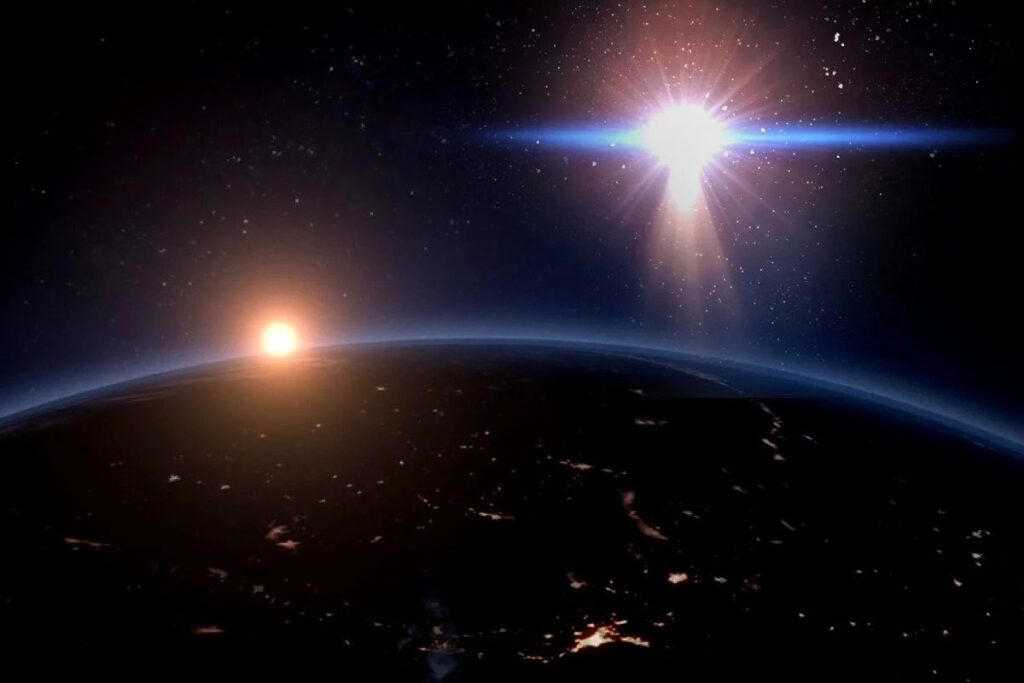The researchers ran mass N simulations to investigate possible outputs for Earth. They started with eight solar system planets and added a stray star to their model. They also matched the mass of the simulated stray stars with the mass of the nearby star. They also investigated the initial velocity of the wandering stars relative to the surrounding environment. They then simulated different velocities and trajectories of the star to arrive at a range of Earth-related outputs. In total, the researchers achieved 12,000 simulations.
According to the authors, if a star is located at a distance of 100 AU from the Sun, more than 95% of all eight planets in the solar system will survive. A measure called angular momentum loss (AMD) due to the star’s passage can determine what happens next. AMD is a measure of planetary system orbital excitation and its long-term stability; But what will happen if one of the planets of the solar system is lost?
Researchers’ simulations led to divergent results. Mercury is the most vulnerable planet and according to the simulation, it will be destroyed by impact with the Sun. Other results are: the collision of the Earth with Venus, the expulsion of the ice giants Uranus and Neptune, remaining only Earth and Jupiter or only Jupiter. In an apocalyptic outcome, all eight planets are ejected from the solar system.
Other results are less significant. Based on these results, all eight planets remain unchanged, undergo slight declination or, in the third scenario, become severely declinated. Although eight planets survive in most simulations, this survival can have different meanings. Although the planets remain in the solar system and are gravitationally connected to the sun, their orbits will be severely disrupted. The orbit of some of them can even be thrown into the Oort cloud.
The researchers also listed ten examples of the most likely outcomes for planetary destruction. They write:
The possibilities are as follows:
When it comes to rejected planets, Uranus and Neptune are the most obvious examples. Of course, this result is not surprising because these planets have a weaker gravitational bond with the Sun due to their distance. It is also not surprising that Mercury will also collide with the Sun, because due to its low mass, it faces a higher risk of being deflected by a passing stray star.
In relation to land, a wide range of possible outcomes is suggested. According to the above list, the probability of Earth colliding with another planet is 0.48%; But another fate awaits the earth, which is not so pleasant: exile to the Everett Cloud.
Another strange result of the simulations is also worth noting: Earth getting trapped by the wandering star. According to this simulation, the wandering star is slightly less massive than the Sun and is approaching our solar system at a relatively low speed.
Based on the above conclusion, the Earth leaves the Sun and escapes with the passing star; while the other six planets collide with the sun. Meanwhile, Jupiter is the only survivor, and of course this result is not strange, because Jupiter is the heaviest planet in the solar system.
The mentioned article considers a wide range of possibilities, including the collision of the moon with the earth, the moon and the earth falling into the trap of the wandering star, and even the destruction of all the planets and their moons; But the probability of these occurrences is very small.
However, how could Earth remain habitable in such an encounter? If the Earth’s orbit changes, the planet will definitely get colder or warmer.
There are more possible destinies. Earth, for example, can survive as a wandering planet for a million years or more before its surface freezes. or maintain its viability by trapping the wandering star in a new combination.
Finally, the probability of a star passing through the distance of 100 astronomical units is very small, and according to simulations, even if this happens, all eight planets will be saved, although their orbit will be slightly different from the current orbit. In general, despite the variety of evolutionary paths, the current state of our solar system will most likely not change.



